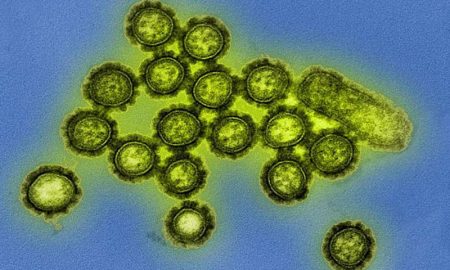November 30, 2017 – If you are a reader in the Northern Hemisphere and haven’t had a flu shot as of yet, you may want to consider getting one. My wife and I have been getting the seasonal flu shot for more than 33 years. We started the practice because our daughter was born with a heart-lung congenital condition and any respiratory infection could have killed her. We have, however, seen the benefit of getting “shot” once every year in the fall with neither of us getting a case of influenza through these three decades.
According to the U.S. Center for Disease Control (CDC) getting vaccinated for influenza could save your life. And because the virus evolves so rapidly, annual vaccinations are needed which cover the latest strains. The CDC keeps flu-related statistics and they are quite troubling. Millions get flu every year. Hundreds of thousands are hospitalized. Tens of thousands die.
What the vaccination does is help your body to develop antibodies within two weeks after the shot. Typically the latest strains of influenza follow a north-south pattern. When Australia is in its flu season, North America and Europe are not. Strains that develop in Australia often become the basis for the formulation of the vaccine administered 6 months later in the Northern Hemisphere.
The composition of this year’s flu shot, therefore, is different from the one administered for the last flu season. The CDC notes the following strains are covered for this season:
- A/Michigan/45/2015 (H1N1)pdm09-like virus – This is a variant on the H1N1 given in the last flu season.
- A/Hong Kong/4801/2014 (H3N2)-like virus – This is the H3N2 component which is the same as was given in the last flu season.
- B/Brisbane/60/2008-like (B/Victoria lineage) virus – This is an influenza B strain that is also the same as given in last year’s flu season.
- B/Phuket/3073/2013-like (B/Yamagata lineage) virus – This is an influenza B strain that was given to some people in their flu shot last season.

A small percentage of people react to the flu vaccine and these experiences exacerbated by anti-vaxxer groups leads to the majority of the population in North America opting out of getting the annual shot. There is a commonly circulated myth that the flu shot can give you the flu. This is poppycock. But nonetheless, you read these stories on the Internet in the run-up to flu season every year.
The most common negative reactions vary from temporary swelling and redness around the injection site to arm soreness. Between 1 and 2% of people report running a low-grade fever and feeling achy. An allergic reaction to the vaccine does happen (the vaccines are incubated in eggs or in combination with yeast proteins) but such incidences are rare.
On average each season the vaccine proves to be quite effective particularly when the formulation of the vaccine matches what strains are circulating around the globe. The CDC reports that 60% of those receiving the vaccine are less likely to catch the flu than those who are not vaccinated.
Your age can also contribute to the effectiveness of the flu vaccine. It works best with older children and healthy adults. The elderly remain more susceptible to the flu than the general population even with the vaccine. That’s why in some countries the elderly receive high-dose vaccines, four times the strength of the standard vaccine. This has proven to be effective in eliminating the potential for the disease or in reducing severity of symptoms should they become infected.
Can Scientists Develop a Vaccine that is Better Than 60% Effective?
At Johns Hopkins University, a team of researchers is working with attenuated viruses (viruses weakened but still alive) to see if they can stimulate the body’s immune response. In an October 25th published article appearing in the journal Vaccine, they report the ability to alter the virus’ ability to mutate which is the biggest reason for the need to reformulate the vaccine every season. Keeping the flu virus from evolving makes it far easier to develop a defense against it. And since there are a number of strains of influenza found globally, what the team at John Hopkins have discovered could lead to inhibiting mutation in all strains.
This means that vaccines can be personalized to specific groups and targeted to protect the population from prevalent influenza found there. That’s not quite getting a personalized vaccine for each of us, but it is a first step on the road to getting there.
In the interim, though, I highly encourage all of you without egg or yeast protein allergies to get inoculated against the seasonal flu. The CDC is quite insistent regarding flu stating, “everyone 6 months of age and older should get a flu vaccine every season,” a recommendation that has been in place since 2010.


















